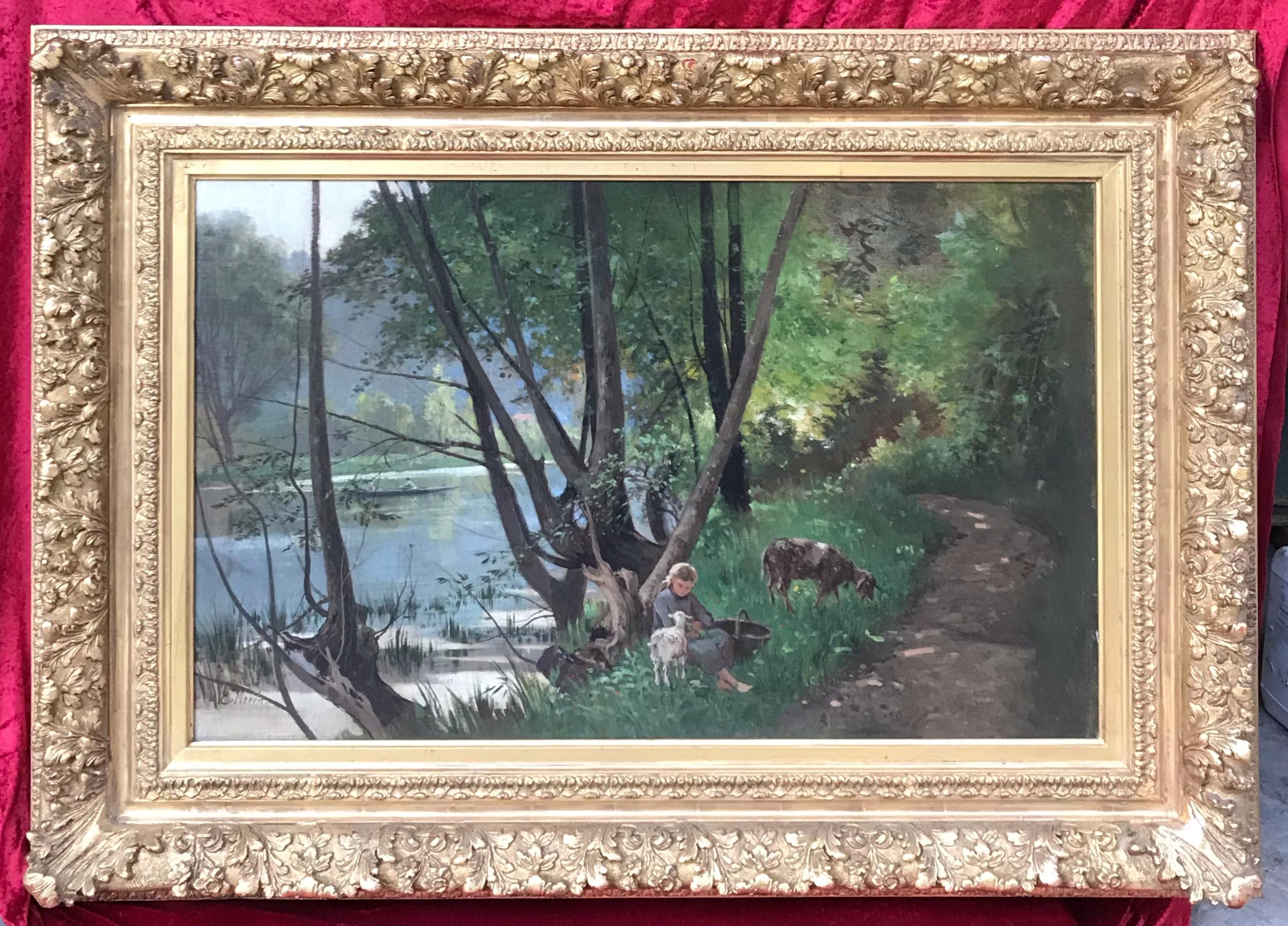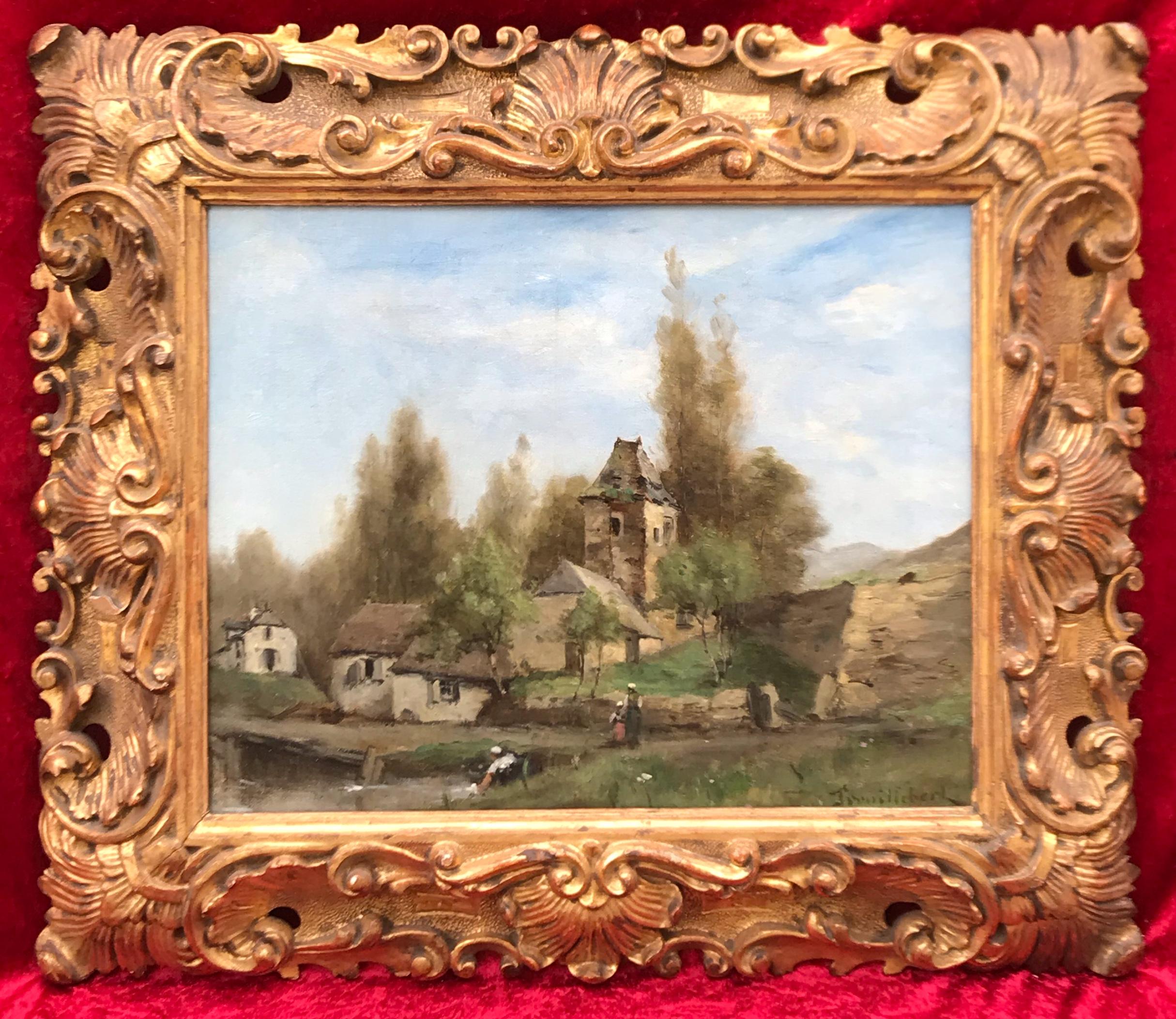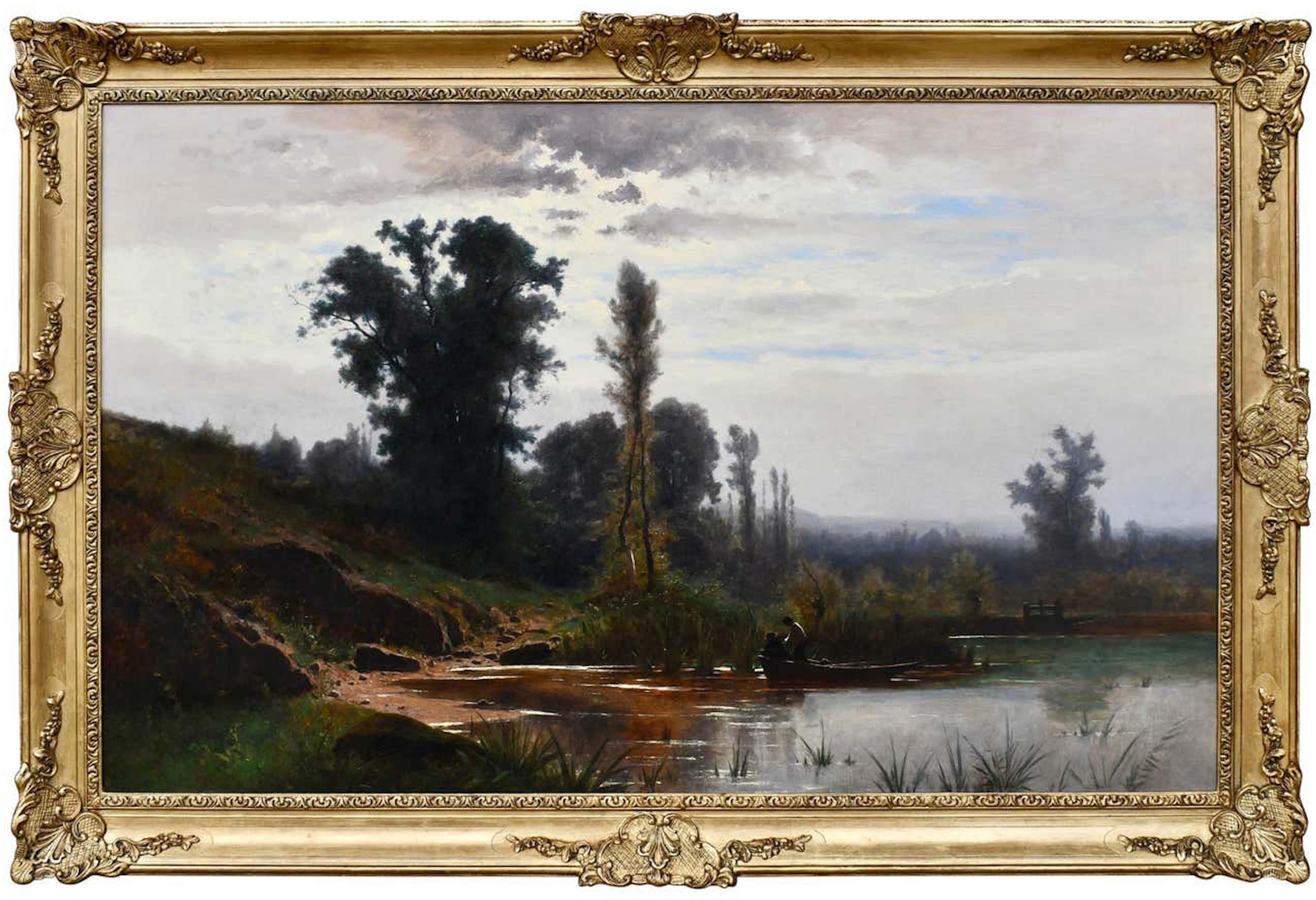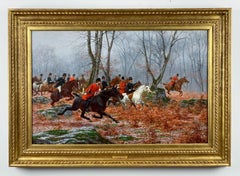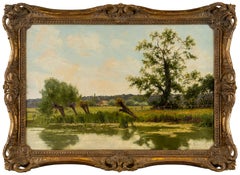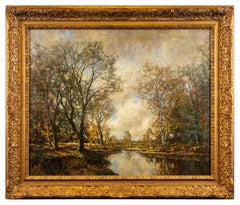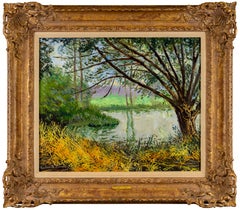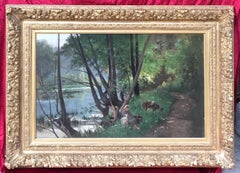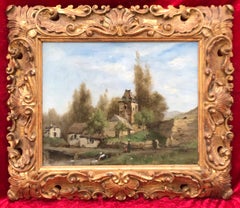Items Similar to Scene de Chasse
Want more images or videos?
Request additional images or videos from the seller
1 of 8
Alexandre Marie GuilleminScene de Chasse1860's
1860's
$5,850
£4,442.38
€5,135.13
CA$8,221.62
A$9,154.76
CHF 4,841.25
MX$111,407.86
NOK 61,025.06
SEK 57,494.58
DKK 38,324.82
About the Item
Alexandre Marie Guillemin
French, 1817-1880
Scene de Chasse
Oil on Panel
9 by 12in. w/frame 17 ½ by 20 ½in.
Signed lower right
He studied with Baron Gros. He exhibited at the Salon de Paris and was awarded medals in 1841 & 1845.
Museums:
Le Havre, Monteal, Toulon.
Reference:
Benezit, Dictionnaire des Peintres
Provenance:
Private Collection New York
Le Trianon Fine Art & Antiques
Art G18
$5,850
- Creator:Alexandre Marie Guillemin (1817 - 1880)
- Creation Year:1860's
- Dimensions:Height: 17.5 in (44.45 cm)Width: 20.5 in (52.07 cm)Depth: 2 in (5.08 cm)
- Medium:
- Movement & Style:
- Period:
- Condition:
- Gallery Location:Sheffield, MA
- Reference Number:Seller: Art G181stDibs: LU70036883652
About the Seller
4.3
Vetted Professional Seller
Every seller passes strict standards for authenticity and reliability
1stDibs seller since 2017
55 sales on 1stDibs
Typical response time: 12 hours
- ShippingRetrieving quote...Shipping from: Sheffield, MA
- Return Policy
Authenticity Guarantee
In the unlikely event there’s an issue with an item’s authenticity, contact us within 1 year for a full refund. DetailsMoney-Back Guarantee
If your item is not as described, is damaged in transit, or does not arrive, contact us within 7 days for a full refund. Details24-Hour Cancellation
You have a 24-hour grace period in which to reconsider your purchase, with no questions asked.Vetted Professional Sellers
Our world-class sellers must adhere to strict standards for service and quality, maintaining the integrity of our listings.Price-Match Guarantee
If you find that a seller listed the same item for a lower price elsewhere, we’ll match it.Trusted Global Delivery
Our best-in-class carrier network provides specialized shipping options worldwide, including custom delivery.More From This Seller
View AllA Travers Bois
Located in Sheffield, MA
Jean Richard Goubie
French, 1842-1899
A Travers Bois
Oil on canvas
25 ½ by 39 ¾ in. W/frame 30 ½ by 45 in.
Circa 1892
Jean Richard Goubie was bo...
Category
1890s Barbizon School Landscape Paintings
Materials
Oil
Barbizon Landscape
By Henri Joseph Harpignies
Located in Sheffield, MA
Henri-Joseph Harpignies
French, 1819-1916
Barbizon Landscape
Oil on canvas
16 by 24 in, w/ frame 20 ¾ by 28 ¾ in
Signed lower right
Henri Joseph Harpignies was a landscape artist b...
Category
Late 19th Century Barbizon School Landscape Paintings
Materials
Oil
Sheep by the River
By Arnold Marc Gorter
Located in Sheffield, MA
Arnold Marc Gorter
Dutch, 1866-1933
Sheep by the River
Oil on canvas
26 ¾ by 32 ¾ in, w/ frame 34 ½ by 40 ½ in
Signed lower right
Arnold Marc Gorter studied at the National Academy...
Category
Early 20th Century Barbizon School Landscape Paintings
Materials
Oil
Le Vieux Saule au Bond de l’Orne
By Paul Emile Pissarro
Located in Sheffield, MA
Paul-Emile Pissarro
French, 1884-1972
Le Vieux Saule au Bond de l’Orne
Oil on canvas
21 ¾ by 25 ¾ in, w/ frame 30 ½ by 34 ½ in
Signed lower left
Paul-Emile Pissarro was born in Era...
Category
Early 20th Century Barbizon School Landscape Paintings
Materials
Oil
Landscape with Figures
By Gaston Sebire
Located in Sheffield, MA
Gaston Sebire
French, 1920-2001
Landscape with Figures
Oil on canvas
31 by 41 ½ in, w/ frame 38 by 48 ½ in
Signed lower right
Gaston Sebire was born August 18, 1920, in Saint-Samso...
Category
Late 20th Century Impressionist Landscape Paintings
Materials
Oil
French Countryside
Located in Sheffield, MA
Charles Charlay-Pompon
French, 1854-1914
French Countryside
Oil on canvas
Signed lower right
11 by 21 in. w/frame 16 ½ by 26 ½ in.
Charles Charl...
Category
1880s Impressionist Landscape Paintings
Materials
Oil
You May Also Like
Bergère et son troupeau crépuscule, plaine de Barbizon
By Jean Ferdinand CHAIGNEAU 1
Located in Atlanta, GA
Jean-Ferdinand Chaigneau was born in the shipping center of Bordeaux on March 6th, 1830. There he studied drawing under the academic painter Jean-Paul Alaux (1788-1858). In 1847...
Category
19th Century Academic Landscape Paintings
Materials
Oil, Panel
La Rentrée du Troupeau en Plaine de Barbizon
By Jean Ferdinand CHAIGNEAU 1
Located in Atlanta, GA
Jean-Ferdinand Chaigneau was born in the shipping center of Bordeaux on March 6th, 1830. There he studied drawing under the academic painter Jean-Paul Alaux (1788-1858). In 1847...
Category
19th Century Academic Landscape Paintings
Materials
Oil, Panel
Original Painting French Barbizon School 19th Century
Located in Saint-Ouen, FR
MORIN Charles Camille (1846 – 1919)
The Girl with goats by the river
Oil on canvas signed low left
Old frame gilded with leaves
Dim canvas : 58 X 91 cm
Dim Frame : 88 X 112 cm
MORI...
Category
1890s Barbizon School Landscape Paintings
Materials
Oil
Landscape from Barbizon With Characters
Located in Saint-Ouen, FR
Paul Désiré Trouillebert (1829-1900)
Landscape from Barbizon with characters
Oil on canvas signed low right
Old original sculpted wood frame gilded with leaves
Size canvas : 33 X 41 cm
Size frame : 43 X 51 cm
Paul Désiré Trouillebert (1829-1900)
Paul Désiré Trouillebert (1829 in Paris, France – 28 June 1900 in Paris, France) was a famous French Barbizon School painter in the mid-nineteenth and the early twentieth centuries.
Trouillebert is considered a portraitist, a genre and landscape painter from the French Barbizon School. He was a student of Ernest Hébert...
Category
1880s Barbizon School Landscape Paintings
Materials
Oil
On the River Bank
Located in Wiscasett, ME
Oil on canvas, signed lower left. Measurements: Framed: 38" x 58" Unframed: 32" x 52" Provenance: JJ Patrickson and Son (label on reverse) The Englishman Fine Art, Naples, FL Gustave Castan...
Category
19th Century Barbizon School Landscape Paintings
Materials
Oil
$11,100 Sale Price
25% Off
19th century French Barbizon School Painting oil on Canvas Landscape circa 1840
Located in Portland, OR
19th century French Barbizon School Painting, oil on canvas signed "Marin", Circa 1840. A very attractive bucolic, pastoral landsacpe scene with sheep grazing on the banks of a lake ...
Category
Early 19th Century Barbizon School Landscape Paintings
Materials
Canvas, Oil


